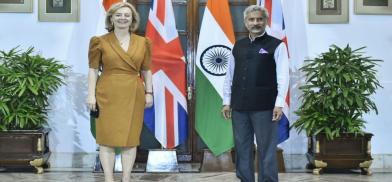UK-India ties under PM Truss: Promise of stronger business and bilateral trade outcomes
India’s reluctance to ink comprehensive FTAs contrasts with the enthusiasm of the UK to stitch up such deals with the bustling Indo-Pacific region, especially with the 11-member Comprehensive and Progressive Agreement for Trans-Pacific Partnership that includes the fast-growing Vietnam, Malaysia and Mexico, by the end of 2022

UK's new Prime Minister Liz Truss will doubtless hit the ground running to address the serious problems faced by the recessionary domestic economy and cost of living crisis affecting millions of Britons. The third woman premier will also have to reset and calibrate UK’s ties with important nations in a post-Brexit world of diminished British influence and geopolitical tensions.
All eyes naturally are on what the new prime minister will do to bolster ties with India as part of a wider outreach to the Indo-Pacific region. Truss, for her part, has championed closer business ties with India, describing them as a “sweet spot” of global trade dynamics when she was UK’s International Trade Secretary.
Truss in that capacity had visited India and signed off on the India-UK Enhanced Trade Partnership for the Boris Johnson-led administration in May 2021. For such reasons, she is expected to follow the roadmap 2030 on trade and investment, defence and security, health, climate change and people-to-people contacts to bolster a comprehensive India-UK strategic partnership.
An ambitious, if not unrealistic, target has been set by both nations to raise bilateral trade to $100 billion by 2030. Several rounds of discussions on a free trade agreement – an interim deal for starters -- have already taken place amidst expectations that it may be inked by Diwali this year.
Stagnant trade and unequal tariffs
However, the big challenge is that the economic component of the bilateral relationship is somewhat underwhelming, considering the long historical association of the two nations. Over the last decade, two-way trade has been stagnant, averaging $14-15 billion with a trade surplus in India’s favour of $3 billion. If two-way trade is to hit $100 billion, both partners must step up investments in each other’s economies.
India, for its part, is the second largest source of inward investments into the UK with 99 investment projects that created 4,830 jobs in 2020-21, according to the UK’s Department of Industry. UK is the sixth largest investor in India with investments of $1.6 billion in 2021-22.
Besides investments, bilateral trade is bound to look up even more if both partners also agree to remove trade barriers on the path to a comprehensive FTA. Negotiations entail a process of give and take for greater access to each other’s markets. Despite the advantage of a trade surplus so far in India’s favour, a more ambitious trade deal – which also includes regulatory policy reform, environmental standards, labour rights etc -- is not on the cards so long as the simple average tariffs on goods imported into India from the UK are three times higher than tariffs on Indian goods exported to the UK.
If India seeks greater market access, it must also allow the UK to sell more of its goods and services.
India’s reluctance to ink comprehensive FTAs contrasts with the enthusiasm of the UK to stitch up such deals with the bustling Indo-Pacific region, especially with the 11-member Comprehensive and Progressive Agreement for Trans-Pacific Partnership that includes the fast-growing Vietnam, Malaysia and Mexico by end-2022. “Two-thirds of the world’s middle classes are going to live in Asia by 2030 and the types of products that they are demanding are types of things Britain produces – whether those are high value manufactured goods, quality food and drink, digital and data products, financial services,” stated Truss as International Trade Secretary to the Financial Times.
UK's economic crisis and Indian triumphalism
The new PM’s topmost priority, however, will be to tackle UK’s economic crisis on a war footing. UK’s economy is virtually in recession and in fact contracted much more due to Covid-19 in 2020 – by 11 per cent, the largest in more than 300 years – according to the revised data of the Office of National Statistics. Updated estimates for 2021 and the first two quarters this year will become available by this month-end. Upon winning the election to become prime minister, she vowed that she will “deliver a bold plan to cut taxes and grow the economy. I will deliver on the energy crisis, dealing with people’s energy bills
but also dealing with long-term issues we have on energy supply.”
The travails of negative growth have meant that UK’s nominal gross domestic product has slipped below that of India. India now is the fifth largest economy in the world, a fact that has occasioned a bit of triumphalism with Prime Minister Narendra Modi stating that “the pleasure of surpassing the UK, who ruled over India for approximately 250 years, supersedes the mere statistics of improved ranking from the sixth largest to the fifth largest economy.”
However, this is only more statistical than real as UK’s per capita income is still 19 times larger than India’s. Interestingly, the same set of factors led to Bangladesh’s per capita income becoming higher than India’s, occasioning considerable angst. This may not be the right note to engage PM Truss for strengthening the strategic partnership.
(The writer is an economics and business commentator based in New Delhi. His views are personal. He may be contacted at nchandramohan@rediffmail.com)










Post a Comment